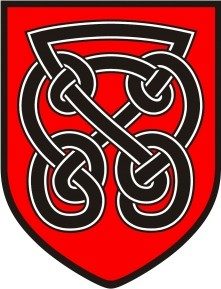| | TPS1 | TPS2 | TPS3 | TPS4 | TPS5 | TPS6 |
| AF1 – Knowledge & Understanding of Places | State the features of different places and give basic reasons for the locations of those features | A brief description of the physical and human features of places around the world with some Geographical reference | Describe the physical and human features in detail of places, relating it to where they are in the world with basic use of Geographical evidence | Explain in detail the physical and human features of places in a range of locations and scales using accurate Geographical reference | Link knowledge together and analyse the features of places of a wide range of locations and detailed Geographical reference | Analyse changes in the physical and human characteristics of places. Explain reasons for these changes over time at a wide range of locations, contexts and scales. |
| AF2 – Knowledge & Understanding of Processes & Patterns | State some similarities and differences between places with some basic identification of geographical processes. | Recognise simple geographical patterns. Recognise that physical and human processes can change places and people | Describe geographical patterns using some specific geographical terms Describe how processes affect places and people | Identify geographical patterns at a range of scales using specific geographical terms. Explain how geographical processes produce the different features of places. | Analyse geographical patterns at a range of scales. Explain any links between processes. | Analyse any links between human and physical processes and show how those links create diversity, interdependence and change over time and at different scales. |
| AF3 – Application of knowledge and understanding. | Give some basic information on geographical examples | A brief description of a geographical example with limited place specific information, reference and key terms. | Recognise and describe geographical examples using some facts, reference and key terms. Describe the interactions between people and the environment | Describe and explain a geographical example using some specific facts, reference and key terms. Explain interactions between people and the environment. | Apply and explain geographical examples using a range of place specific facts, reference and key terms. Links to sustainability are drawn | Fully apply and evaluate specific geographical examples using a wide range of place specific facts, reference and key terms. Explicit links to sustainability |
| AF4 – Skills & Enquiry | Use basic geographical skills and sources to answer some geographical questions. | Demonstrates some geographical skills such as constructing and basically interpreting graphs and maps. | Demonstrates some good understanding of basic geographical skills such as graphicacy and cartography | Demonstrates a good understanding in constructing, interpreting and comparing some graphical, numerical and cartographic sources | Demonstrates a sound Learning Plans of constructing, interpreting and comparing graphical, numerical and cartographic sources. | Demonstrates high Learning Plans of constructing, interpreting and comparing graphical, numerical and cartographic sources |
| QWC | Begin to use basic, appropriate Geographical vocabulary. Sentences are basic with little structure. | Basic vocabulary is used confidently with more some structure and description. | Describe in detail with some explanation using several key terms with some structure and conclusion. | Explanations are detailed with coherent organisation and a range of information using many geographical words and a detailed conclusion. | Explanation is explicit and links are made between pieces of information. Evaluation of evidence is present and there is some independent research. | Explicit use of geographical vocabulary that is clearly structured with a sound explanation and evaluation. Conclusions are well rounded and use a range of evidence |
